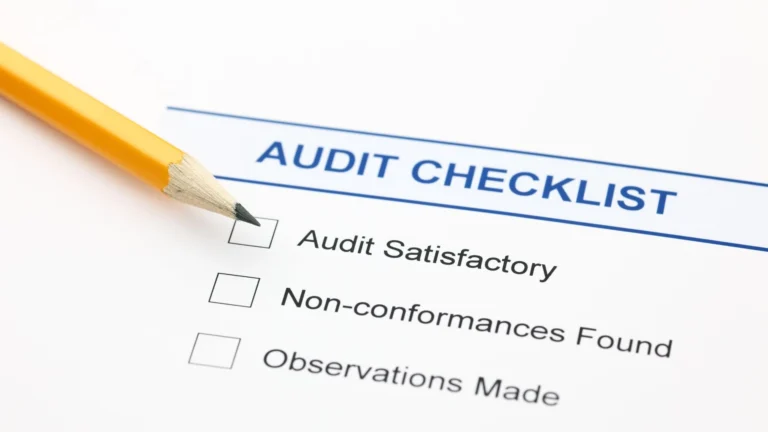Ultimate Internal Audit Checklist for 2025: Step‑by‑Step Guide

-
Ultimate Internal Audit Checklist for 2025: Step‑by‑Step Guide
- Introduction to the Ultimate Internal Audit Checklist
- 1. Plan and Scope Your Audit
- 2. Gather Background and Identify Stakeholders
- 3. Conduct Process Walkthroughs with Good Questions
- 4. Prepare Your Audit Checklist or Excel Template
- 5. Import Documents and Documentation
- 6. Test Controls and Transactions
- 7. Analyze Your Findings
- 8. Draft the Report
- 9. Hold a Closing Conversation
- 10. Follow‑Up and Validate Remediations
- Indian-Specific Templates and Compliance Guidance
- Conclusion
Introduction to the Ultimate Internal Audit Checklist
Internal audits are no longer just a formality—they’re a critical part of managing risk, strengthening internal controls, and meeting regulatory expectations. For CA students and finance professionals in India, conducting an internal audit the right way means following a structured process aligned with both global standards and Indian regulations like the Companies Act and ICAI’s guidelines.
This guide walks you through eight essential steps to plan and execute an effective internal audit in 2025. Whether you’re working on your first audit or looking to sharpen your approach, this checklist will help you stay compliant, thorough, and efficient.
1. Plan and Scope Your Audit
Start by defining why you’re auditing and what you’re including. Establish clear objectives and decide which processes or departments fall within your scope. A focused scope helps ensure you’re efficient and impactful.
2. Gather Background and Identify Stakeholders
Collect your baseline materials: organization charts, process manuals, previous audit reports. Identify who you’ll need to engage for walkthroughs and document reviews. Good stakeholder mapping ensures all voices are heard early.
3. Conduct Process Walkthroughs with Good Questions
Walkthroughs give you real insight.
What controls prevent or detect fraud?
How are access rights and segregation of duties managed?
How is risk assessed and documented?
Have significant control issues been flagged, and how are they resolved?
What’s the process for preparing and reviewing financial statements?
Which are the key accounts and estimates?
How are transactions recorded and summarized?
Are disclosures accurate and complete?
How does the organization keep up with regulatory changes?
Were there any regulatory inquiries or audits in the last year?
4. Prepare Your Audit Checklist or Excel Template
Based on walkthroughs, build a detailed checklist. Structure it to include:
| Process Area | Control Tested | Procedure | Evidence Source | Result | Notes |
|---|
This helps you track what you’ve done and what still needs attention.
5. Import Documents and Documentation
Gather all your walkthrough and evidence documents. Use a tool (or manually) to reference the control point against policies, emails, approvals—whatever supports your testing. Captured evidence should clearly connect procedures to outcomes.
6. Test Controls and Transactions
Perform your audit tests: conduct interviews and inspections. Use risk-based sampling and document your results—yes/no outcomes, deviations found, or exceptions noted. Ensure each entry links back to the specific evidence file.
Read also: Top 10 Red Flags Every Auditor Should Know
7. Analyze Your Findings
Look beyond flags—pin down why issues occurred. Was it a training gap? A timing error? A missing policy? Identifying root causes helps draft more actionable recommendations.
8. Draft the Report
Write a clear report that includes:
Observation: What happened (or didn’t)?
Why: Root cause.
Impact: Why it matters.
Recommendation: What should be done.
Owner & Timeline: Who does it and by when.
9. Hold a Closing Conversation
Before finalizing the report, walk stakeholders through your findings. This encourages collaboration, helps clarify any misunderstandings, and builds rapport—making implementation smoother.
10. Follow‑Up and Validate Remediations
Track each agreed action. After a set period, revisit the evidence—was the control fixed? Confirm with documentation or repeat tests. Maintain a follow-up log noting status (open/closed), responsible person, and proof of change.
Indian-Specific Templates and Compliance Guidance
While conducting audits in India, it’s essential to stay updated with ICAI’s internal audit checklist. The 2024 edition includes detailed guidance in Part A (internal control evaluation) and Part B (operational and financial checks).
These checklists are especially helpful for CA students or new professionals learning the ropes, as they provide a structured format to follow and align with industry expectations.
Conclusion
Internal audits are evolving—and in 2025, it’s not just about ticking boxes. It’s about understanding risks, strengthening operations, and adding real value. This step-by-step checklist is designed to guide you through a smooth and effective audit process, whether you’re a CA in practice, part of a corporate finance team, or preparing for your article-ship.
Make it a habit to refine your process after each audit cycle. Stay current with ICAI guidelines. And above all, treat internal audit as a tool for growth—not just compliance.